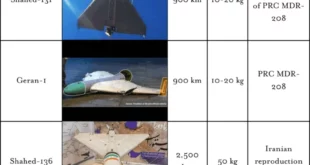In the Clash of Civilizations and Remaking of the World Order, Samuel Huntington discusses the revival of Islamic values within the Islamic world and discusses the social and cultural work of Islamic organizations within the Islamic societies. When defining the revival of Islamic values these organizations adopted to do positive social and cultural welfare work, Huntington uses the word “resurgence” and describes the organizations as “fundamentalist” organizations. Much of what Huntington writes, he, in fact highlights the impactful social and cultural welfare work in Islamic societies these organizations delivered; yet the reader in the West is led to see the values upon which the welfare activities were carried out as “resurgence” and “fundamentalist” activities. The deliberate use of these two terms, “resurgence” and “fundamentalist” are misleading for the reader in the West who, to the present date, may not understand that Islamic societies and their existence is primarily directed in accordance with Islamic values.
Islam is a complete system of life for the Muslim world and Islamic societies completely function in accordance with such values. At the very least, the manifestation of Islamic values may be more prevalent in one domain of the society than the other. The use of word “resurgence” and “fundamentalist” promote a negative image of the Islamic organizations, which is misleading for the reader; however, Huntington’s own documentation of the welfare work by these organizations require the replacement of “resurgence” with “revival” and “fundamentalist” with the direct use of term “Islamic” to directly describe the organizations. Huntington also could have used the term “Traditionalist” instead of “Fundamentalist” for the reader to understand the meaningful welfare work these organizations did and their role in the Muslim societies. Additionally, this could provide a great insight into understanding the emergence of such groups within the Muslim world to avoid misleading and negative generalization of such groups in the Western world.
The generic definition of “resurgence” is “a new increase of activity or interest in a particular subject or idea that had been forgotten for some time” (Cambridge). Similarly, the word “fundamentalist” is defined as “someone who believes in traditional forms of a religion or believes that what is written in a holy book, such as the Christian Bible, is completely true” (Cambridge). Nevertheless, the sociological context of both terms points to both being a negative force that propels society away from its liberal values and achievements. From this viewpoint, the resurgence and fundamentalist movements or activities become archaic, unmodern, and violent that do not have a place with the liberal values that are all about modernism and shift from what is considered “traditional.” The thought of returning to the traditional religious norms and values is seen as a force of clash between groups who are not “traditionalists” but “fundamentalists,” fanatics that upset the status quo.
Lt. Col Jon R. Bail writes in the article, “Islamic Resurgence in the Middle East,” a research report submitted at the Air War College, Air University, that “Common descriptions for Islamic resurgence include fundamentalism, revivalism, activism, and Islamism. The most popular term in Western literature is also the most inaccurate and stereotypical—that of fundamentalism.” Therein lies the problem which Bail is addressing, and a reason for better use of such terms that Huntington could have used. Resurgence and fundamentalist or fundamentalism are wrongly understood terms in the West. Because of extremely negligent use of these terms, the media in the West further solidified the negative meaning associated with these terms. Further writing on this, Bail notes, “The term is generally used in a derogatory manner and implies a resistance to change and modernization. This is not necessarily true of the Islamic movement. Furthermore, fundamentalism has generally been connected to terrorism and extremism, when in reality many of the resurgence movements are within mainstream Middle Eastern society. (3:7) Therefore, a less prejudiced term to describe the resurgence movement is Islamic revivalism or activism.” For Huntington, the use of a “less prejudiced” term was required that aligned more with what he describes.
In the section, “Islamic Resurgence,” written in The Clash of Civilizations and Remaking of the World Order, Huntington notes, “While Asians became increasingly assertive as a result of economic development, Muslims in massive numbers were simultaneously turning toward Islam as the source of identity, meaning, stability, legitimacy, development, power, and hope, hope epitomized in the slogan “Islam is the solution.” For the Muslim world, returning to the Islamic values and revival of such values meant seeking solutions particularly tailored for Islamic societies. As Huntington writes, it was an effort of the Muslim world to “find the ‘solution’ not in the Western ideologies but in Islam.” This revival did not mean that Muslim societies rejected modernity. It only meant that Islamic values would be the way to govern life. Islam is the key element of identity. What did the revival or “Resurgence” mean? It meant, according to Huntington, that “It is a broad intellectual, cultural, social, and political movement prevalent throughout the Islamic world.” Muslim societies would embrace modernity as an intellectual and cultural pursuit that would also require identifying values in Muslim societies.
Bail also highlights a similar point in his article. He states that “Contrary to Western conventional wisdom, Islamism is not simply a right-wing religious movement. Instead, it is a highly political phenomenon which seeks to create an ideal Islamic society based on the Koran and the way of life in the early Islamic community of the Prophet. (4:2) The goal is an Islamic society that encourages an upright, Islamic life at home and protects the political, cultural, and religious integrity of the Islamic state within the international community. (5:2).” Islamic revival was not an extremist movement. It was a movement of identifying values, norms, standards, and beliefs that align to main sources of objective morality and righteousness, the Quran, and the Sunnah (the life and practices of Prophet Muhammad, peace be upon him). Using the words of Hassan al-Turabi, Huntington quotes, “this awakening is comprehensive–it is not just above individual piety; it is not just intellectual and cultural, nor it is just political. It is all of these, a comprehensive reconstruction of society from top to bottom.”
This is a concept that is often misunderstood, overlooked, or deliberately ignored in Western society, and there is a reason for it. Bail asserts that “For Americans this is a difficult concept to grasp due to the secular evolution of the relationship between Christianity and government among Western nations. Any attempt to turn the clock back to the 7th century implies something backward, utopian, and undesirable to most Americans. Without going into great religious detail, suffice it to say that Islam is a faith and way of life where political and religious authorities are inseparable.” As a result, the use of term “resurgence” and “fundamentalist” removes the sociological context and the historical context of the Islamic social and cultural organizations that were formed as a push against the Western or colonial dominance that did not serve the needs of the Muslim societies and puts a shadow over the social welfare work these organizations did.
What are the Islamic organizations that Huntington discusses and what social and cultural work did each organization do? In the early 1970s, Islamic symbols, beliefs, practices, institutions, policies, and organization had the support and commitment of 1 billion Muslim population, which constituted much of the Muslim population globally. This support and commitment started increasing in the 1970s according to Huntington. Because Islamic values cover the whole aspect of Muslim life, the revival of these values spread first from the cultural realm and then spread to social and political domains. The key effect of the revival of Islamic values was formation of Islamic organizations or organizations that would adapt the Islamic values as a form of identity.
By 1995, the majority of countries with a predominantly Muslim population, excluding Iran, demonstrated a heightened cultural, social, and political impact from Islam and its values compared to the situation fifteen years earlier. A key element of this trend in many nations was the formation of Islamic social organizations and the takeover of existing entities by Islamic groups. Islamists concentrated on establishing Islamic schools and augmenting the influence of Islam in state educational institutions. As a result, Islamic groups established an Islamic “civil society” that ran alongside and replaced the occasionally delicate institutions of secular civil society. In words of Huntington, the establishment of “Islamic civil society that paralleled, surpassed, and often supplanted in scope and activity the frequently frail institutions of secular civil society.” Providing several examples, Huntington documents the notable work these organizations did:
In the 1990s, Islamic organizations developed an extensive network of organizations that provided healthcare, welfare, education and services to Egypt’s poor.
In 1992, an earthquake Cairo struck. Islamic organizations provided food and blankets within a few hours of the incident. Government response was extremely slow.
In Jordan, the Muslim Brotherhood strategically developed the social and cultural infrastructure of an Islamic republic. By the 1990s, the organization was operating a “large network of hospitals, twenty clinics, forty Islamic schools, and 120 Islamic schools, which Huntington described as “Koranic study centers.”
In the West Bank and Gaza, Islamic organizations opened and operated student unions, religious and traditional schools that ranged from Kindergarten to an Islamic University.
In Indonesia, in the 1970s and 1980s, Islamic Organization named Muhhammadijah consisted of 6 million people and established a welfare state within a secular state. The organization provided cradle to grave services, established a network of schools, clinics, hospitals, and university education throughout the country. The provided examples suggest that the revival of Islamic values within the Muslim world created organizations built upon Islamic principles that offered social and cultural solutions that could only be provided within the context of those societies. The Western solutions, forged with liberalist views that are often contradictory and lack the objective morality that directly comes from God Almighty, Islamic society logically then would need religious schools and educational curriculum that incorporates Islamic values, its deep intellectual, and purified set of thoughts. Islamic organizations helped fulfill such needs in the Muslim-majority countries. The governments within the Muslim-majority countries are often behind in fulfilling the needs of the masses. The individuals behind such organizations were intellectuals and students, consisting of engineering and medical backgrounds that joined the organizations to address the pressing needs of the society such as healthcare, educational institutions, and social welfare.
Huntington describes this “As with most revolutionary movements, the core element has consisted of students and intellectuals. In most countries fundamentalists winning control of student unions and similar organizations was the first phase in the process of political Islamization, with the Islamist “breakthrough” in universities occurring in the 1970s in Egypt, Pakistan, and Afghanistan, and then moving on to other Muslim countries.” Again, here the use of the word “fundamentalists” shadows the positive work these organizations did. When the reader comes across, “Islamist,” “Resurgence, ” and “Fundamentalist,” these terms draw the reader into a negative stereotype and lead the reader to believe that violent extremism actually sprang thus in the Muslim-majority countries, which is not true.
Huntington mentions, “Like fundamentalists in other religions, Islamists are overwhelmingly participants in and products of the processes of modernization. They are mobile and modern-oriented younger people drawn in large part from three groups.” Modernity was embraced, but what was not embraced was the set of Western values and dominance that contradicted the very identity and fabric of Muslim-majority countries. It was not violent extremism and the brainwashed sector of the society that joined the Islamic organizations to do good. In fact, “it was Islamist activists ‘probably include a disproportionately large number of the best-educated and most intelligent young people in their respective populations, including doctors, lawyers, engineers, scientists, teachers, civil servants.” Hence, a system of governance was established in the Islamic majority country that was neither communist nor a byproduct of the Western political system, but rather a system that incorporated Islamic values that would serve the needs of Muslims in a Muslim-majority country.
To best describe the spur of Islamic values, “revival” is a better term instead of “resurgence,” and “traditionalist,” or “Islamic” is a better replacement for the term “fundamentalist” to provide proper historical and sociological context to the role Islamic organizations played in Muslim-majority countries.
 Eurasia Press & News
Eurasia Press & News



